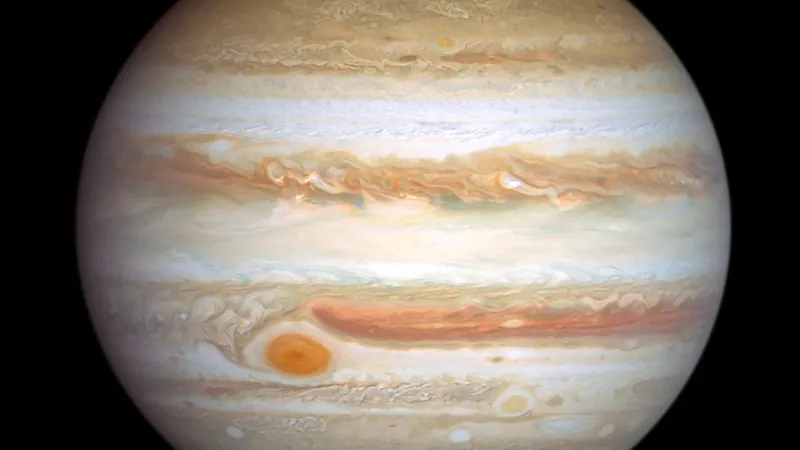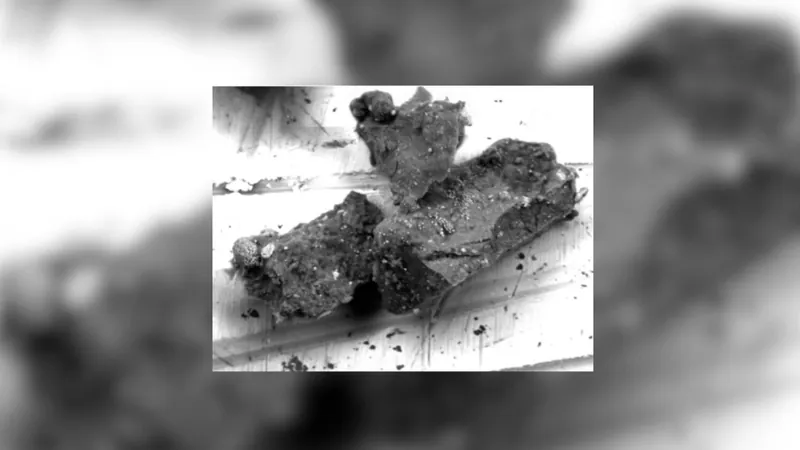
Amateur Astronomer Makes Stunning Discovery About Jupiter's Clouds - Is Our Understanding of the Gas Giant Changing?
2025-01-09
Author: Benjamin
Groundbreaking Discovery Challenges Traditional Beliefs About Jupiter
In a groundbreaking collaboration between professional scientists and amateur astronomers, long-standing beliefs about Jupiter’s swirling clouds are being challenged. An amateur astronomer named Steve Hill has made an astonishing discovery that suggests the gas giant’s famous cloud formations may not be composed of frozen ammonia, as previously thought.
Innovative Techniques Reveal New Insights
Using a combination of affordable telescopes and specialized spectral filters, Hill meticulously gathered data to analyze the ammonia content in Jupiter's atmosphere. What he uncovered not only contradicted traditional models but also opened up an entire new realm of questions about the composition of clouds on this massive planet.
Experts React to the Findings
“I was genuinely surprised!” commented Patrick Irwin from the University of Oxford. Initially skeptical of Hill's methods, Irwin's reservations soon transformed into excitement as the intricate details of Hill's findings began to unfold.
Ammonia Ice: A Misconception?
Typically, Jupiter's atmosphere is recognized as a mix of hydrogen and helium. However, it also contains small quantities of other gases, like ammonia, methane, and water vapor, which condense at varying altitudes to shape the planet’s stunning cloud structures. Scientists had previously assumed that these upper clouds were largely made of ammonia ice, primarily because ammonia is abundant in the atmosphere and condenses at lower pressure than other gases.
Hill's Methodology and Discovery
Hill connected with Irwin in early 2023, presenting his intriguing analysis to a mutual contact at the British Astronomical Society and seeking collaboration for validation. The method he employed, band-depth analysis, harkens back to techniques used in the 1970s and 1980s, focusing on how different gases absorb light at specific wavelengths, particularly ammonia and methane.
By measuring the absorption of methane at 619 nm and ammonia at 647 nm, Hill was able to construct an accurate map of ammonia distribution above Jupiter's cloud tops. Methane’s known abundance provided a baseline against which ammonia's absorption could be measured, leading to the discovery that the reflected light originated from cloud layers at pressures and temperatures far too high for ammonia to condense into ice.
Revolutionary Implications for Cloud Composition
“We observed that the reflection comes from layers much deeper than ammonia’s expected condensation point of 0.7 bar, indicating it actually occurs between 2 to 3 bars,” Irwin stated. This revelation meant that ammonia ice likely does not constitute the primary material for Jupiter’s upper clouds.
Alternative Hypotheses on Cloud Composition
Instead, current modeling suggests that the clouds might mostly consist of ammonium hydrosulfide and possibly pollution-like smog due to photochemical reactions occurring in the atmosphere. “It’s also been proposed that an unusual mix of water and ammonia could be present,” Irwin noted.
Complexity of Jupiter's Atmosphere
This finding highlights the complex and dynamic photochemistry of Jupiter's atmosphere. “In many areas, ammonia is broken down faster than it can rise, resulting in pure ammonia ice clouds being quite rare,” Irwin explained further.
Cross-Validation with Advanced Instruments
Hill's data was solidified through comparisons with data from advanced instruments such as the MUSE on the European Southern Observatory’s Very Large Telescope (VLT), the Very Large Array (VLA), and NASA's Juno mission. This is significant as it not only confirms Hill's extraordinary findings but also enhances our overall methodologies for studying gas giants like Jupiter and Saturn.
Significance of Understanding Ammonia on Jupiter
“Understanding where ammonia is located on Jupiter provides critical insights into the planet's weather processes,” Hill remarked in his original publication in Earth and Space Science. Despite this exciting advancement, scientists also acknowledge that there remain challenges in fully understanding ammonia’s vertical distribution in the atmosphere.
Broader Implications for Planetary Science
Furthermore, the same analytical techniques have been applied to Saturn, revealing that the cloud reflections there also occur at depths greater than previously determined, suggesting similar photochemical processes are at play.
A Collaborative Breakthrough in Astronomy
This collaborative effort underscores how both amateur and professional astronomers can contribute vital knowledge to our growing understanding of the universe, proving that even simple observations can unravel profound cosmic mysteries. Keep watching the skies—there’s no telling what else we might discover!









 Brasil (PT)
Brasil (PT)
 Canada (EN)
Canada (EN)
 Chile (ES)
Chile (ES)
 Česko (CS)
Česko (CS)
 대한민국 (KO)
대한민국 (KO)
 España (ES)
España (ES)
 France (FR)
France (FR)
 Hong Kong (EN)
Hong Kong (EN)
 Italia (IT)
Italia (IT)
 日本 (JA)
日本 (JA)
 Magyarország (HU)
Magyarország (HU)
 Norge (NO)
Norge (NO)
 Polska (PL)
Polska (PL)
 Schweiz (DE)
Schweiz (DE)
 Singapore (EN)
Singapore (EN)
 Sverige (SV)
Sverige (SV)
 Suomi (FI)
Suomi (FI)
 Türkiye (TR)
Türkiye (TR)
 الإمارات العربية المتحدة (AR)
الإمارات العربية المتحدة (AR)